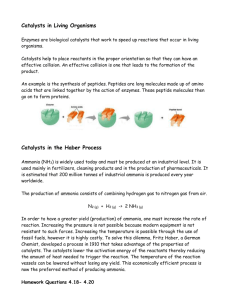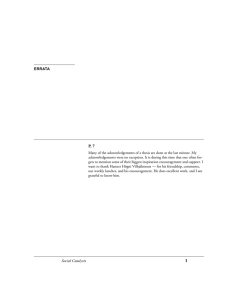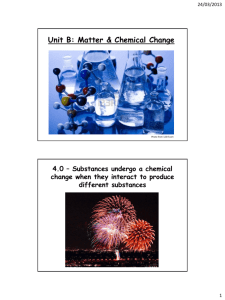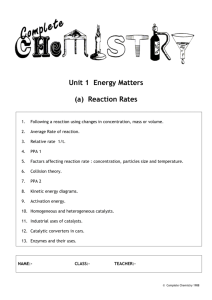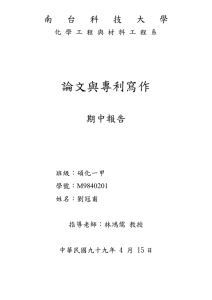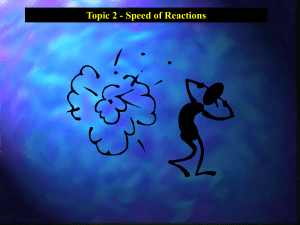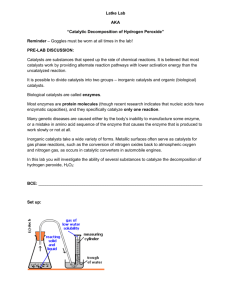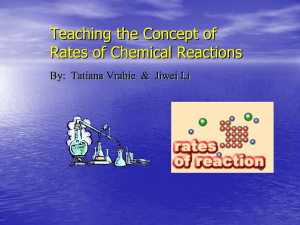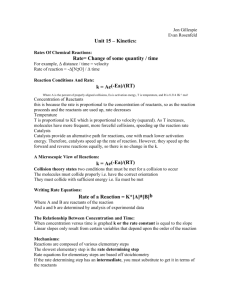Following the course of a reaction
advertisement
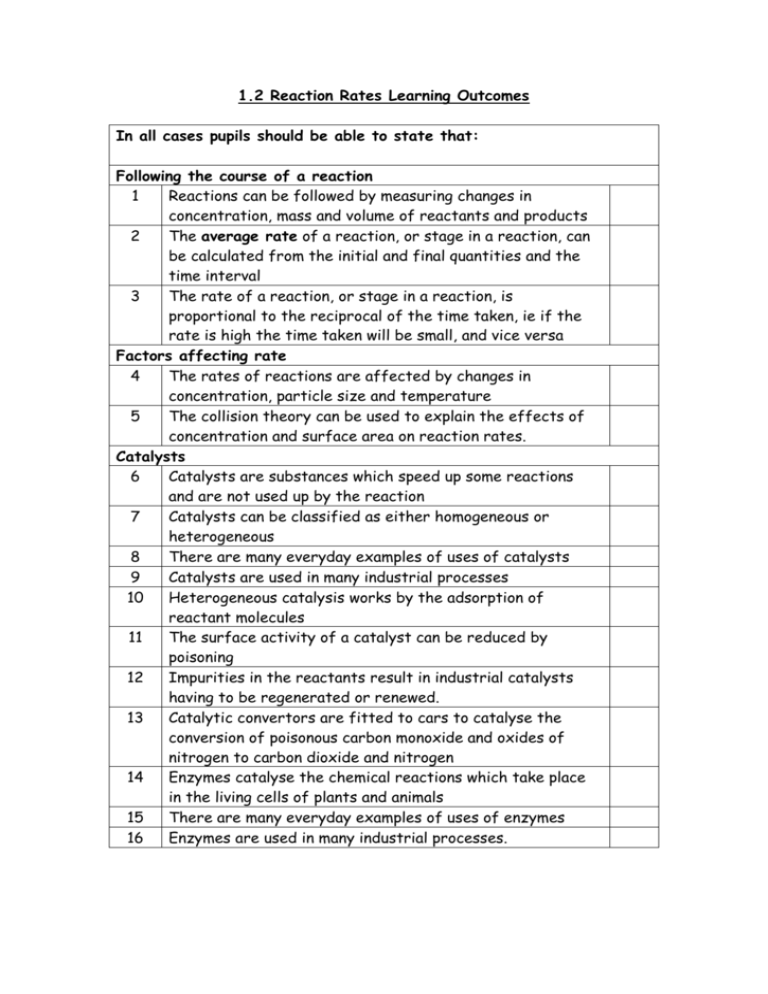
1.2 Reaction Rates Learning Outcomes In all cases pupils should be able to state that: Following the course of a reaction 1 Reactions can be followed by measuring changes in concentration, mass and volume of reactants and products 2 The average rate of a reaction, or stage in a reaction, can be calculated from the initial and final quantities and the time interval 3 The rate of a reaction, or stage in a reaction, is proportional to the reciprocal of the time taken, ie if the rate is high the time taken will be small, and vice versa Factors affecting rate 4 The rates of reactions are affected by changes in concentration, particle size and temperature 5 The collision theory can be used to explain the effects of concentration and surface area on reaction rates. Catalysts 6 Catalysts are substances which speed up some reactions and are not used up by the reaction 7 Catalysts can be classified as either homogeneous or heterogeneous 8 There are many everyday examples of uses of catalysts 9 Catalysts are used in many industrial processes 10 Heterogeneous catalysis works by the adsorption of reactant molecules 11 The surface activity of a catalyst can be reduced by poisoning 12 Impurities in the reactants result in industrial catalysts having to be regenerated or renewed. 13 Catalytic convertors are fitted to cars to catalyse the conversion of poisonous carbon monoxide and oxides of nitrogen to carbon dioxide and nitrogen 14 Enzymes catalyse the chemical reactions which take place in the living cells of plants and animals 15 There are many everyday examples of uses of enzymes 16 Enzymes are used in many industrial processes.
